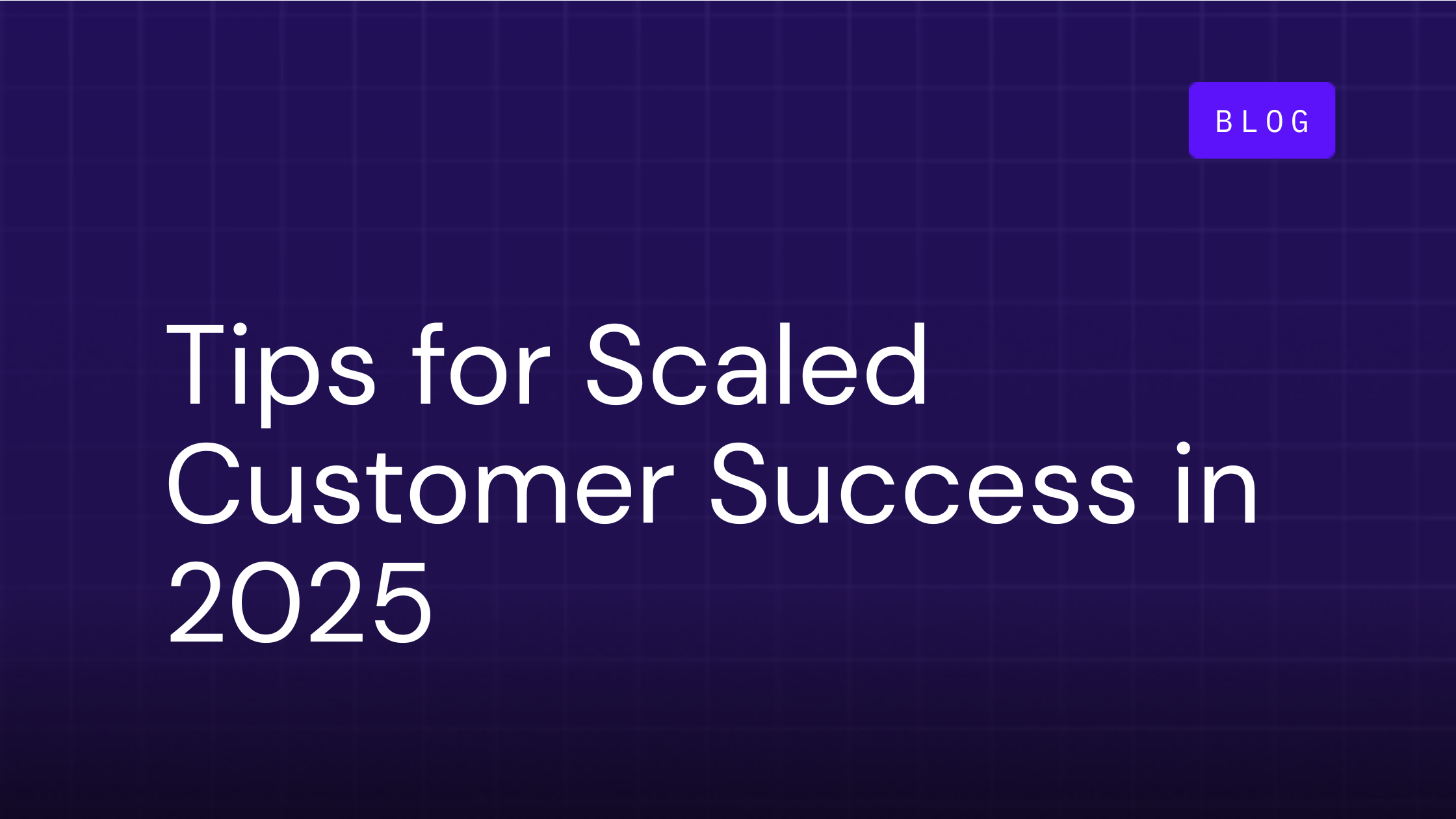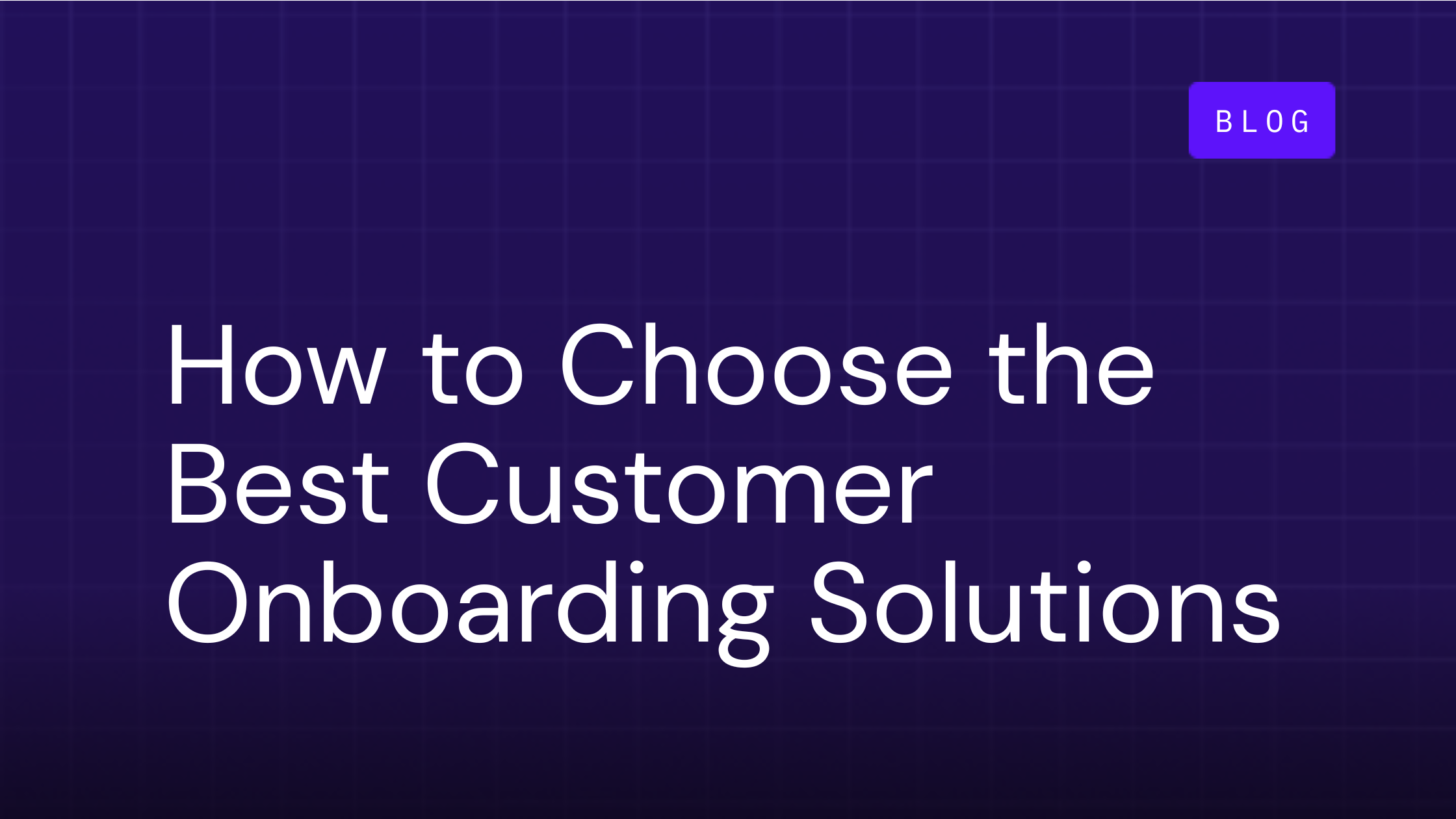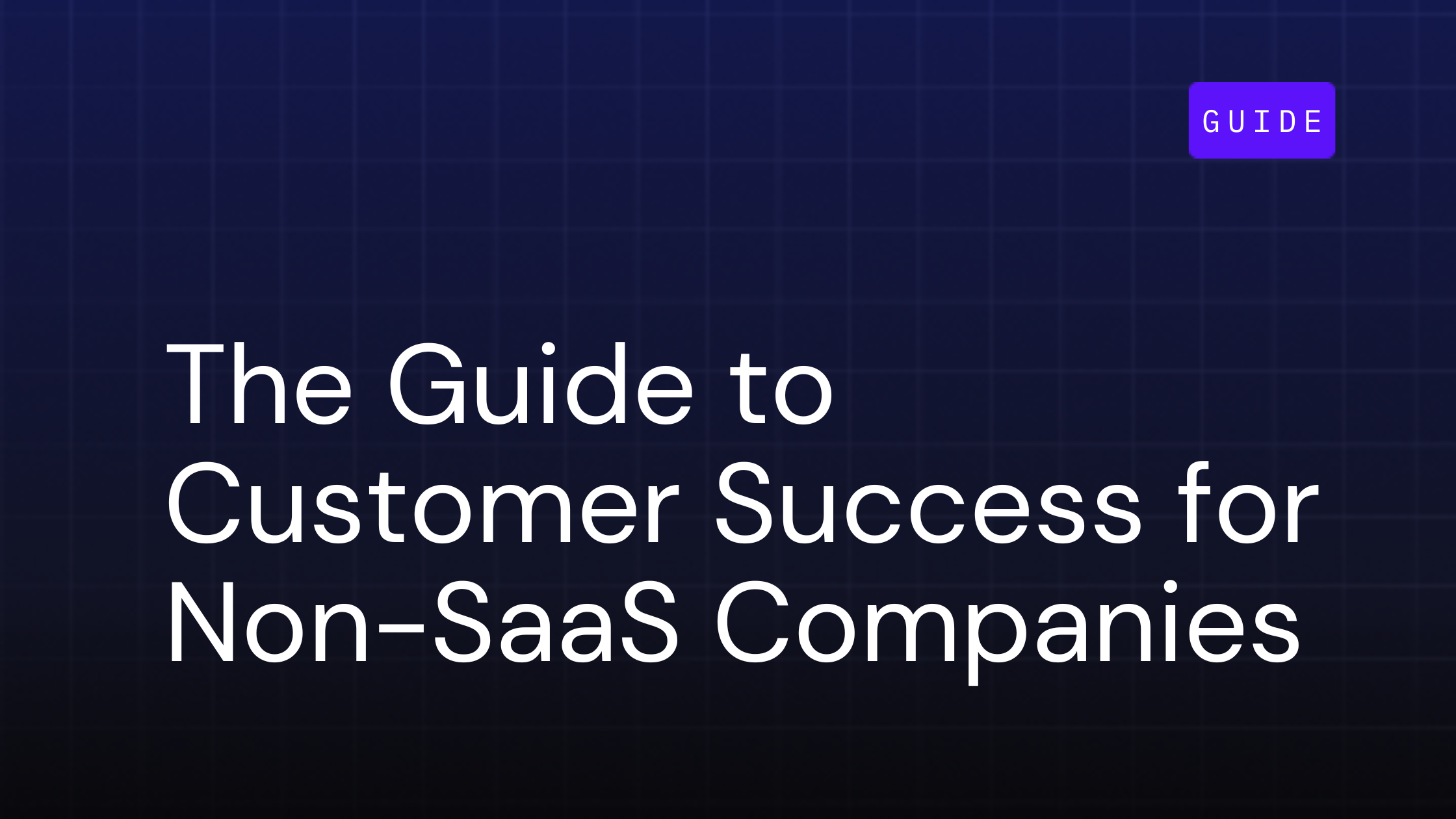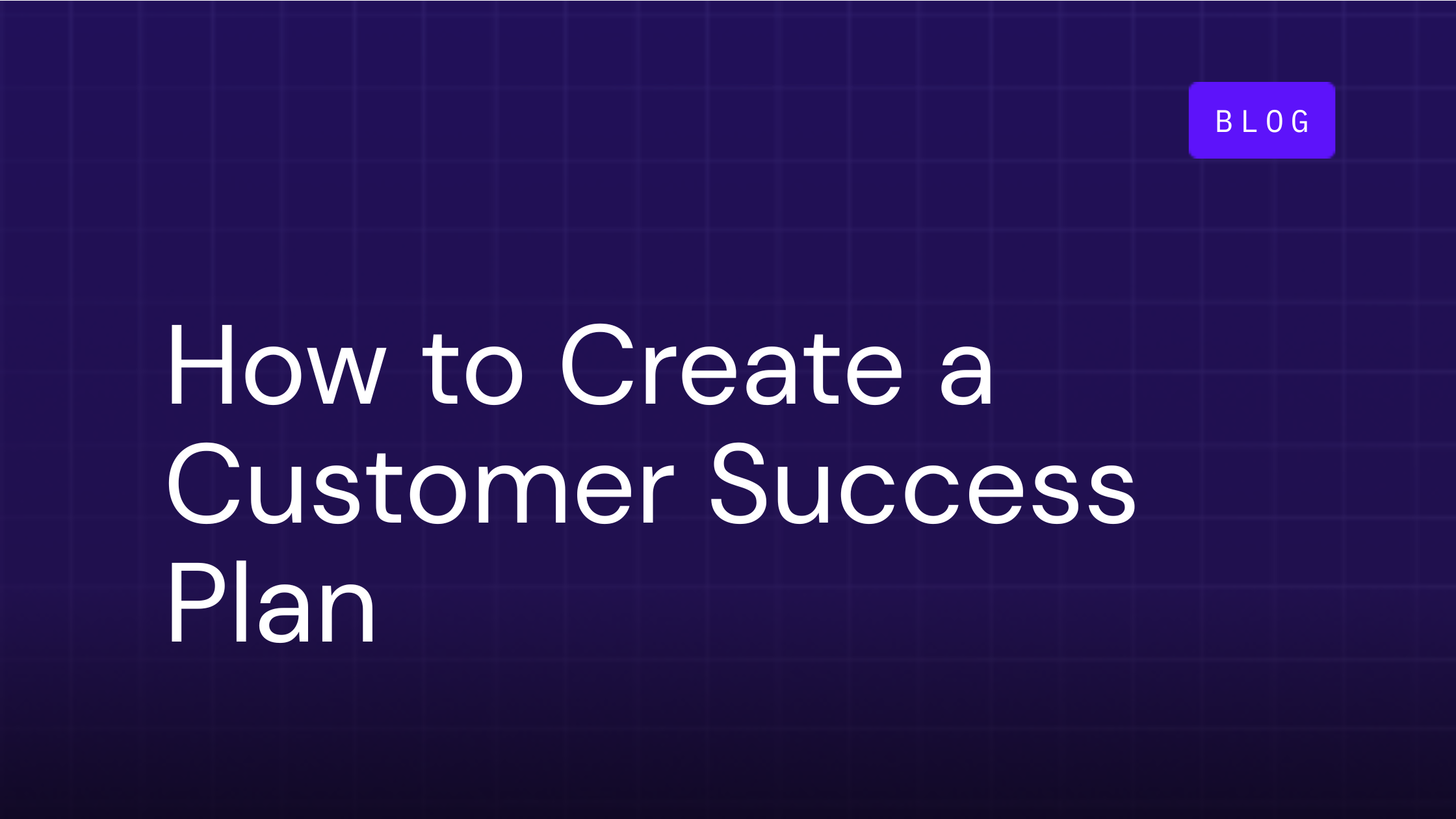Tips for Scaled Customer Success in 2025
Published: June 6, 2024

Table of Contents
When companies acquire new clients, they usually have to continually expand their onboarding and customer success (CS) teams to ensure there is enough bandwidth to support new customers. The problem is that you can’t keep hiring additional staff as your customer base grows — it’s just inefficient. What if you could onboard any number of users without increasing headcount and burning out existing onboarding employees?
That’s where scaling customer success comes into play. By implementing the right tools and technology, CS teams can automate repetitive tasks, making space to cater to more high-touch customer needs. And the customer benefits from a better experience, too. Let’s explore why, and how to implement scaled customer success in your team.
What is Scaled Customer Success?
It’s well-known that customers are essential to any business – and that means providing the highest level of customer service to ensure satisfaction and a positive experience. But as your customer base grows, this means more demands get placed on your customer success team, which has to keep growing in order to keep up with the larger volume of customers. But this ever-expanding team size is not sustainable – which is where scaled customer success can help businesses strategize. Scaled customer success is a “one-to-many” approach to CS, where teams can automate essential and repetitive customer interactions to be able to do more with fewer resources.
Scaled customer success is not about stepping back what you offer to customers and taking a hands-off approach, as this will only lead to churn. Instead, at its core, scaled customer success is truly about driving efficiency to make the most out of the most important customer interactions.
So what does this look like in practice? This can mean using a customer success platform or onboarding software that hosts training playbooks, content guides, tutorials, CSM communications and messaging, and learning hubs all in one convenient place. This allows the customer to take control over some aspects of their learning process, while easily accessing further information when they need it.
But scaled customer success doesn’t let your CS team off the hook entirely – instead, it’s more of a hybrid model. Instead of answering basic questions over and over, CS managers can automate that using software by providing Q&A videos, FAQ boards, and more. But, when high-value customers need bespoke guidance at key moments in their customer journey or experience, CS managers will have the bandwidth to turn their full attention to those needs and provide a white glove approach. Using the right technological tools, achieving this perfect balance is possible, and it benefits CS teams as well as customers.
What Are the Benefits of Scaling Customer Success?
While scaling customer success benefits customers, for now let’s focus on the benefits it can bring to your business. Of course, scaled customer success benefits customers by providing them with a more seamless and faster customer experience. But what does it do for the companies who implement this strategy?
- Increase customer lifetime value (CLV): The total revenue that an individual customer generates for your business tends to increase the more you invest in customer success. Rather than putting the entire focus on new customer acquisition, often, companies can get a majority of their value from their existing customer base. And scaling customer success is an essential next step when investing in your customers. It means providing best-in-class resources and tools, beyond the one-to-one interactions customers have with your team.
- Gain data insights: When implementing a scaled customer success strategy, you gain data and feedback about what behaviors were most common, which tools and resources segments of your customer base preferred, how customer satisfaction ranks, and more. These insights are beneficial beyond further perfecting your CS strategy and can actually inform crucial decisions across the business.
- Perfect your customer journey: Implementing and assessing your technology-driven CS program will give you new visibility over the entire customer journey. You’ll get a sense of common hurdles customers encounter when using your product and when onboarding, allowing your team to innovate new solutions and catch issues before they grow. As a result, this can help ease the responsibility weighing on your CS team and prevent customer churn.
- Drive team efficiency: Of course, one of the most essential benefits to technological automation within the onboarding process is freeing up time for your CS team to work on non-repetitive, high-value interactions. Scaling customer success means boosting efficiency in your team while also fighting burnout.
Does Scaled Customer Success Work for Businesses of All Sizes?
Yes, think of it this way: if you have a large CS team, you likely have a large customer base, and enhancing your use of automation can help the team better serve those customers when they need it most. If you have a small CS team, scaling customer success can help them manage a growing customer base when backed by fewer resources. Scaled customer success is truly about the smart distribution of insights, educational materials, and resources.
How to Scale Customer Success?
1. Identify goals and metrics
Before you implement a new strategy, it’s important to be clear and unified about the overarching goal: what is it and how will it be measured? This will help you determine exactly which steps to prioritize. Some examples include: reducing churn by a certain percentage, increasing adoption of a certain product feature, or increasing the response speed of customer inquiries by a certain amount of time. Always make sure the goals are measurable.
2. Create a clear onboarding process
The onboarding process is one of the first major interactions your new customers have with your company, and it can set the stage for the entire relationship. With a bigger customer base, offering a tailored onboarding experience can be increasingly challenging. That’s why utilizing a customer onboarding software like OnRamp can help walk your customers through their first experiences with your product. OnRamp can show new clients how to use your solutions by guiding them through step-by-step, automated workflows you create. Even better, the technology can track customers’ onboarding journeys so you can see where clients get stuck and use the insights to improve their overall experience. This platform can be a crucial tool as you look to scale customer success, as it can serve as the hub of content, information, educational resources, and communication for your customers.
3. Develop a library of content
Scaling customer success and offering automated solutions requires your team to have the materials to send to customers in lieu of a one-to-one conversation. That means developing this base of content is an essential step. Ensure you have content that covers every stage of the customers’ journey with your product, offer tools and solutions in multiple formats like books, guides, videos, tutorials, and courses, and offer live webinars on a regular basis to walk groups through new features or how to’s.
4. Segment your customers
Customers today expect a personalized experience, and offering that means you need to break your customer base into segments. One method is to divide low and high-touch customers. Low-touch customers are those who typically require less interaction with your CS team. This segment can be a great place to start with rolling out scaled customer success strategies. High -touch customers typically use more of your product’s features and may have more bespoke needs from your CS team. Identify common areas where customers need support and create automated solutions, while keeping your team available to personally handle some of the more complex requests.
5. Employ automation tools
Use tools like OnRamp to help support the team in delivering the best customer experience possible. These tools can be the hub of knowledge and content we discussed above, as well as the go-to place for all things onboarding. Tools like OnRamp enable personalization, automated sends, and more, so that you can provide the right content and tools at the right time to each customer, wherever they are in their journey.
6. Use a service hub
Self-service offerings can provide customers info about your products without the intervention of a CS team. They include:
- An online knowledge base containing a library of information about how your product works and in-depth solutions to problems customers will likely face when implementing your technology.
- Video tutorials that demonstrate how product features work.
- FAQ guides that answer all the frequent questions customers have been asking over the years.
When a customer success professional answers questions over the phone, email, or live chat, that person can only handle one customer at a time. If you provide educational resources about your product on the brand’s website, multiple clients can access the information simultaneously at any time and from anywhere. This promotes scaled customer success by ensuring you don’t need additional staff, even as more companies start using your product.
7. Use your data to make the most of customer feedback
Everyday you get feedback from your customers – whether directly or indirectly. Don’t let this information go to waste. Assess your data, conduct customer feedback surveys, and identify common pain points or hurdles so you can address them and fix them before customers churn. When you increase automation and scale customer success, you can check engagement data and more to see what resources and moments were most effective for your customer base, and adjust your strategy from there.
Is Your Team Ready for Scaled CS?
Scaled CS can help you educate an increasing number of clients about your tools without recruiting more employees. The size of your onboarding team is no longer a barrier to growth, especially if you leverage self-service resources such as online knowledge centers and detailed FAQ guides.
But what if you want to scale customer success from the moment you land new accounts? Customer onboarding software can be the secret weapon you need. However, you have to choose the right platform for it to be effective. That’s where OnRamp comes in.
Our platform enables you to create custom, automated customer onboarding workflows so you avoid the inefficiencies of manual processes and personalize the onboarding experience to your clients' needs. Schedule a demo today to see how OnRamp can help you scale CS without expanding your CS team.
Scaled Customer Success FAQs
What does “scaled customer success” mean?
Scaled customer success means making a customer success strategy that can support a larger customer base by using technology, automation, and other tools to make your team more efficient. It’s about automating repetitive parts of the customer experience so that the team has more time and resources to dedicate to high-touch moments, and customers have more control over finding answers to questions they need in the moment.
Does scaling customer success require additional headcount?
Scaling customer success is not about building a larger team. It’s about making your customer success strategy scalable through automation, technological tools, onboarding software, and more.
Does scaled customer success means you are not offering high-touch service?
No, scaling customer success means automating the repetitive low-touch moments so that your CS team is available to help customers when they need it most. The goal is to improve overall customer satisfaction and the customer experience.
What are the three c’s of customer success?
Courtesy, confidence, and consistency. These three values are essential for businesses to build loyalty, customer lifetime value, and customer satisfaction to avoid churn and promote growth.
What are some KPIs for customer success?
Key performance indicators (KPIs) such as churn rate, satisfaction rate, customer retention, product adoption, and more can be used to measure customer success.
Related Posts:

How to Choose the Best Customer Onboarding Solutions for Your Team
Onboarding new customers can be a critical moment that determines the success or failure of the relationship. So, as you look to...

The Guide to Customer Success for Non-SaaS Companies
We talk often about customer success for software-as-a-service (SaaS) businesses due to the recurring nature of subscription-based...

How to Create a Customer Success Plan
Customer success should top the priority list for any B2B SaaS business. After all, your customers' success is your success. A...